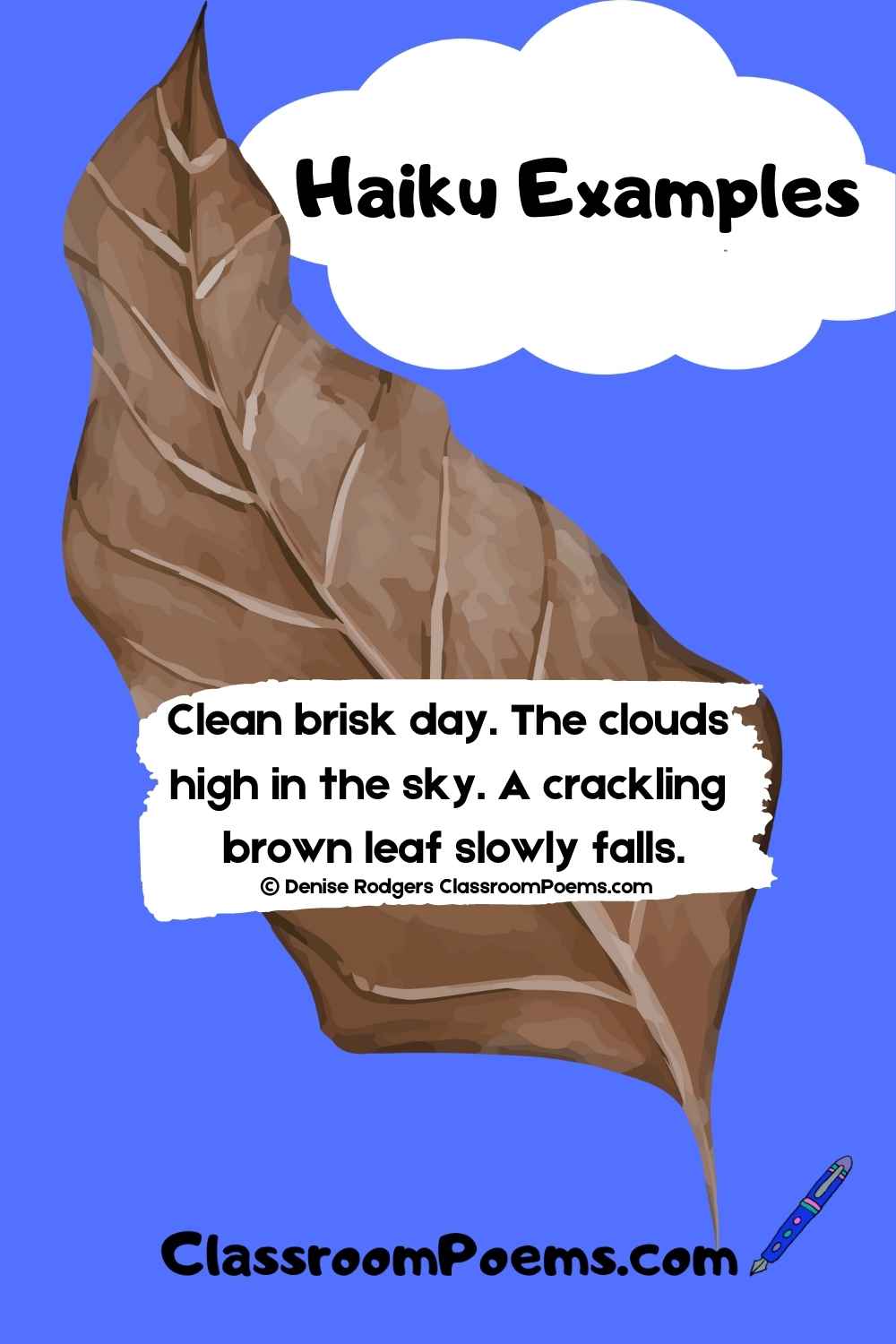How to Write a Haiku
in Five Easy Steps
How to Write a Haiku
Step #1
Review the rules. Haiku have three lines of five,
seven, and five syllables each.
Step #2
Choose a topic.
Step #3
Jot down phrases related to topic.
Step #4
Choose favorite phrases and start constructing
your poem, keeping to 5 – 7 – 5 syllables.
Step #5
Set aside and return to polish. Enjoy!
If you want to learn how to write a Haiku, first read all the
rules of the form. That's a good beginning. Then you have to get to work and start to write one on your own.
Below are the five easy steps in detail, along with an example of a haiku poem in progress.
How to Write a Haiku: Step One
Define your topic. If you review the rules of haiku, you will see that you are to be very specific and write about only one thought, idea or thing. After all, you are limited to only seventeen syllables. You have to pack a lot into them as it is. The task would be much harder with more than one thing to say.
Here is an example lifted straight out of my journal.
As I sat on the couch in my home officesome time ago, my view was of this naked new desk. At the time, no one was using this desk for anything but storage, so it was barren of any signs of life. So this desk became my topic.
How to Write a Haiku: Step Two
Jot down some ideas and thoughts that you might have about your chosen topic. Words that came to mind for me were: barren, sterile, empty drawers, well-dusted, uncluttered. Make a list of some basic thoughts and observations about your chosen topic.
How to Write a Haiku: Step Three
Start pulling out your favorite words and string them together. In
my case, I then wrote a regular prose- or free-verse poem. This is NOT a
necessary step, but I will share this poem with you nonetheless. If you like, read is as a list of images about this desk.
The uncluttered desk
sterile
vast expanse of well-dusted brown
with red-velvet chair
a monument
a statuary with empty drawers
a display of suburban largess
a front with no back
a shell with no scallop
its pristine beauty
will find its demise
when work moves in
with the clutter
of papers, files and books
a fingered picture frame, perhaps
an ink-spattered blotter
and then
only then
will it have life.
How to Write a Haiku: Step Four
Start to put the actual poem together, counting syllables as you form each line. Try, if you can, to make the last line a "gasp," or a revelation of some kind. That is the traditional way of the haiku.
My office desk is
a three-D blank brown canvas
waiting to be art.
Poem and Art by Denise Rodgers
Copyright©Denise Rodgers
All rights reserved.
Permissions
(Please take note of the comfy slippers I wore while taking the photo.)
How to Write Haiku: Step Five
Put your poem aside for an hour, a day, whatever you can spare, and come back to it. See if it sounds good to your ear. See if it "feels" right. Count the syllables. Check and double check. Did you repeat any words? Does the poem have a "gasp" or a "punch" at the end? Is your haiku written in the present tense? (Once again, review all the haiku rules .)
Congratulations! You've written a haiku!
Once you feel your poem is tight and clean, and follows all the rules, it's time to share with the world. Read it to friends, to family, collect your haiku in a book of your own. Post it online if you're so inclined. But most of all, get back to work and write some more! Haiku poems make the world a better place. We need all we can get.
Click here for more
haiku examples.
Or go directly to
Haiku Rules
Funny Haiku









